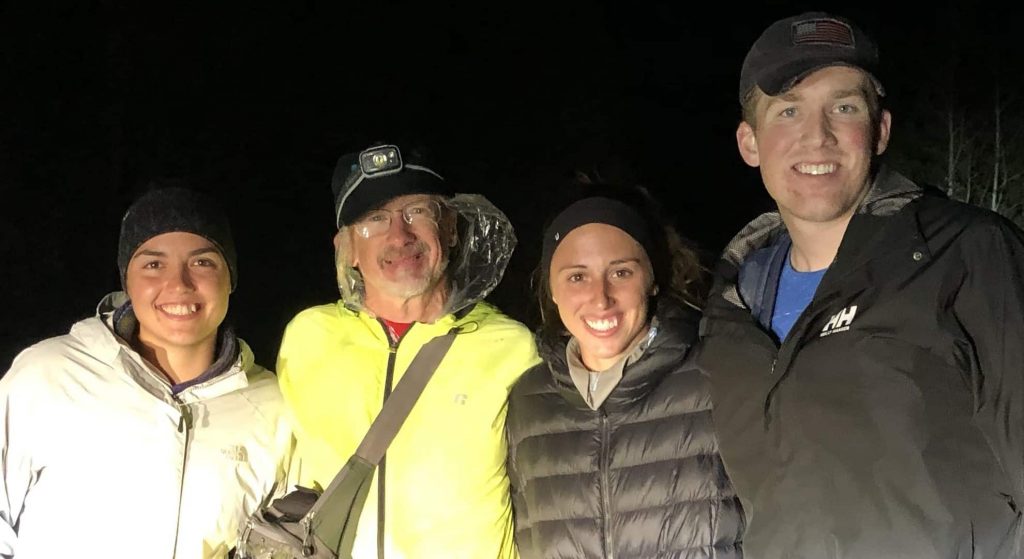
Written by Meghan Barnes
I once worked for an editor who liked to say that time is elastic. “The number of manuscripts isn’t the problem,” he would say, smirking at a room full of overworked editors. “You can fit in any amount of work you’re asked to undertake. Period.”
He was right. I always hit my deadlines, no matter how heavy the load. During months with less work, I got just that amount done. During months with more, same story. Maybe you can relate.
But what if the task is a fifty-mile foot race on Montana trails? According to the Hillsdale College students, alumni, faculty, and staff spouse who ran those fifty miles, the same wisdom applies: time is elastic, and no matter how busy your life is, if you want to run an ultramarathon, you’ll get it done.
“If you’re passionate about anything, you’ll try to find time to make it work,” said Derek Spiteri, owner of Hillsdale’s Handmade Sandwiches and Beverages. “People find time in their schedules to do lots of things.”
Dr. Charles Steele, professor of economics, is the linchpin who inspired Spiteri, Emma McCormick, ’19, Lauren Sheard, ’19, and senior Nick Scovil to run the fifty-mile Le Grizz ultramarathon in Montana in October. He says anyone can commit to a structured training program even with a time-consuming job—Steele is department chair of the Economics, Business, and Accounting Department and has been running Le Grizz since the 1980s.
Le Grizz originated in 1982 and was the first organized ultramarathon in Montana. It currently starts and finishes at the local Polebridge Mercantile, called “the Merc” by locals, then takes off through the peaks of Glacier National Park and runs alongside the north fork of the Flathead River. The trail is at a 2,600-foot elevation and includes only about 20 percent paved road.
McCormick started off the race running with her friends Sheard and Scovil but fairly quickly took off on her own, curious to see what she was capable of. Despite the end of a long run always being the hardest for her, she honed in on her competitive spirit to stay motivated and passed two women in the last eight miles, securing fourth place for herself among all the women running.
McCormick said running an ultramarathon is mostly a competition against yourself more than anyone else. And unlike more normal race lengths, ultramarathoners must think about the race in smaller chunks. Spiteri agreed, recalling miles thirty to thirty-five as his lowest point.
“That inner voice that’s telling you it would be easier if you just quit—that you can end the suffering—started to get louder and louder,” he said. “Then I remembered a report that said, ‘Low mood, eat food,’ so I forced myself to eat a little of the food I had on my pack, walked for a minute to collect my thoughts, then the next turnaround was 35 miles, and I realized I’d moved forward and could rally around that. I knew that every step I take, I’m closer to the finish.”
Dr. Steele differentiated between “the wall” you often hear about in marathon running and the hard patches you hit when you’re running an ultra.
“Because you’re eating and fueling during an ultra, you don’t hit that wall they talk about, where you switch from burning glycogen to fat,” Dr. Steele said. “What you get in ultras is, often on a good day, you’ll have a bad patch, and you run through that because you know it will go away. It’s there, and you just deal with it. As long as you’re not doing damage, you just go through it.”
He added that whining, though fun, should never lead to stopping.
And when you do stop—after you’ve crossed the finish line—what’s next? Turns out, a few days of recovery, and then it’s on to the next big thing. Spiteri fought post-race letdown by having another race on the books in January; McCormick plans to take a break from ultras to try her hand at an Iron Man next year; and Dr. Steele has a number of races on his docket.
Because, after all, there’s always time for a run.
Meghan Barnes is the managing editor of the Student Stories Blog and has worked in publishing since graduating with her MA in Journalism from University of Oklahoma in 2003. She lives in Hillsdale with her three daughters, three pets, and husband, Dr. Collin Barnes.
Published in November 2020
